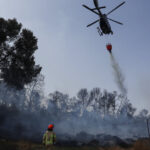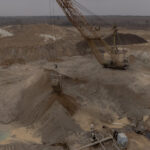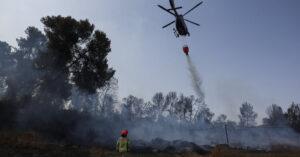Kashmir is many things. It is a disputed borderland that India and Pakistan have fought over for more than three-quarters of a century, making it one of the world’s most strife-torn and militarized zones. It is a Bollywood cinematographer’s alpine dream, its fabled beauty and trauma providing grist for tales of love, longing and war.
Since 2019, when the government of Prime Minister Narendra Modi of India tightened its grip on the Indian-controlled part of Kashmir, promising security and economic development, it has become a tourist hot spot drawing millions of visitors a year. In the government’s narrative of progress, Kashmir is a shining success.
The region’s people have their own story to tell. It is one of festering alienation — magnified by last week’s horrific terrorist attack in Kashmir — after years of living under the watchful eyes of security forces while being deprived of many democratic rights.
Indian troops have launched an aggressive, widespread hunt for the killers that feels like collective punishment to many in the Muslim-majority region. The authorities have detained thousands of Kashmiris for questioning and demolished the homes of at least 10 people accused in the attack.
“We are treated as suspects,” said Sheikh Aamir, a lawyer in northern Kashmir. “Whenever something happens, they punish us all.”
India has said that the terrorist attack, which killed 26 innocent people near the town of Pahalgam, has “cross-border linkages,” implying the involvement of its neighbor Pakistan. Officials in Pakistan, who deny any role in the attack, said on Wednesday that they had detected signs that India was preparing to take retaliatory military action.
India has not commented on its military planning, but Mr. Modi has condemned the attackers and promised to “raze” terrorist safe havens. Airstrikes by India along the border, or even an incursion into Pakistani territory, is possible, analysts said.
These developments have spread fear among Kashmiris, many of whom had already felt isolated from the rest of India as right-wing Hindus have vilified them and painted them as aggressors.
Since the terrorist attack — in which all but one of those killed were Hindu tourists — Hindu nationalists, including officials in Mr. Modi’s party, have used the assault to expand their demonization of Muslims. That has included attacking or harassing Kashmiri students studying in other parts of the country. Many said they had huddled in their rooms in panic.
“The attack on Kashmir has quickly become a mass Islamophobia,” said Rohan Gunaratna, an expert on international terrorism.
Before the massacre, Kashmir had been in a period of relative calm since the Indian government brought the region under its direct control, removing the semi-autonomy guaranteed to Kashmir in India’s Constitution and moving in thousands of troops.
But as the Indian government claimed that it had brought normalcy to the region, some Kashmiris expressed anger at what they called false propaganda.
Normalcy in Kashmir has always been “superficial and deceptive,” said Sumantra Bose, a political scientist and author who has studied Kashmir. He described life in the region as a “real-life hybrid of Orwellian and Kafkaesque.”
Primarily driven by local grievances, an insurgency in the Indian-administered part of Kashmir began in the 1980s, with Pakistan eventually supporting and harboring some groups, experts say. Attacks by militant groups often targeted Hindus, forcing an exodus of the minority community from Kashmir.
The idea pushed by insurgent outfits — that Kashmir should be an independent state or join with Pakistan — has faded as Kashmiris have largely given up the idea of separatism.
Militancy has been “replaced by a deep alienation of the Kashmiri polity,” said Siddiq Wahid, a professor of humanities and social sciences at Shiv Nadar University near Delhi.
The disaffection, coupled with brutish armed forces who show little mercy for innocent Kashmiris in their search for violent ones, could make it easier for new militant groups to emerge, analysts said. It could also impel disgruntled Kashmiris to look away from militant activities, the analysts said.
“Villagers just have to turn their heads away and not report at all,” said Mr. Gunaratna, the terrorism expert. “So they close their eyes.”
An outcry that followed Indian troops’ killing of the young leader of a banned Islamist outfit in 2016 offered clues that there could be “passive support” for militancy, Mr. Gunaratna said.
But the Indian government became complacent because “they bought into their own hubris,” he said. Less than three weeks before the attack near Pahalgam, Amit Shah, India’s minister for home affairs, said that the Modi government had “crippled” the “entire terror ecosystem nurtured by elements against our country” in Kashmir.
The attack was a monumental security lapse for a government that had heavily promoted Kashmir as a dream destination for tourists, thinking that “militants would not attack tourists because they are so integral to the local economy,” Mr. Gunaratna said.
About 10 million people live on the Indian side of Kashmir, roughly 90 percent of whom are Muslim, according to India’s 2011 census. It is the country’s only Muslim-majority region.
India and Pakistan lay claim to all of Kashmir, but each controls only part of it. They have fought multiple wars over the land.
India’s defensive stance has meant the continuous presence of military and paramilitary troops in Kashmir who have effectively turned the region into a police state.
Analysts say there could be as many as 500,000 Indian troops in Kashmir. The armed forces have often used excessive force to flush out Kashmiri militants. Thousands of innocent Kashmiris have died during demolitions and shootouts. Others have been abducted, disappeared or killed in “encounters,” or extrajudicial killings. Government estimates put the number of deaths at 45,000, but human rights groups say it is much higher.
No more than a few dozen terrorism-related deaths are reported every year, according to data from the South Asia Terrorism Portal. Militant attacks in Kashmir and firing along the disputed border have gone from headlines to footnotes.
But the ingredients for the return of more pronounced terrorism in Kashmir have been building in the past few years, according to analysts. The Modi government’s tactics, including the revocation of the region’s limited autonomy, have caused resentment in the community.
New land laws enacted after 2019 allowed nonresidents to purchase property in Kashmir for the first time in decades. Although the government said the laws were intended to increase investment, many Kashmiris saw them as an attempt to change the region’s demography.
There has also been an increase in censorship, including the liberal use of laws to prevent public gatherings or other events in the name of public safety.
Kashmir has become a popular tourist destination for Indians because of its famous lakes and boat rides, and also because it has been such a core part of India’s political identity for so long.
But in outsiders’ portrayals and photographs of Kashmir, the local people have been pushed nearly out of the frame, said Ashiq Husain, a resident of Pahalgam. “People have been used as mere backdrops,” he added.
After last week’s terrorist attack, the real Kashmiris came into view, said Mr. Aamir, the lawyer in northern Kashmir. With security forces absent, they were the first to come to the aid of the injured, and people across the Kashmir Valley have expressed solidarity with the victims and their families.
“There’s mourning in every home,” he said, “and yet we are still seen as enemies.”
Pragati K.B. contributed reporting.











More Stories
Israel Scrambles to Extinguish Wildfires on Outskirts of Jerusalem
With Minerals Deal, Trump Seems to Tie Himself to Future of Ukraine
The U.S.-Ukraine Mineral Deal: What We Know